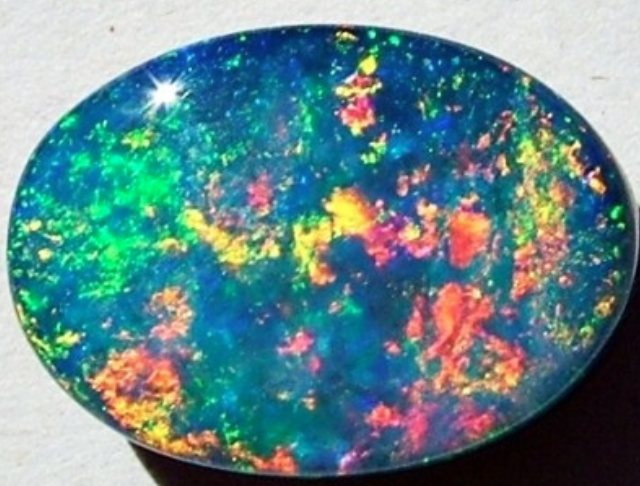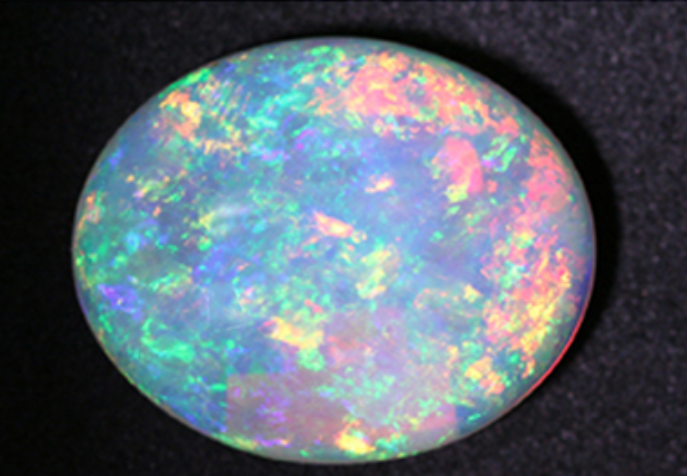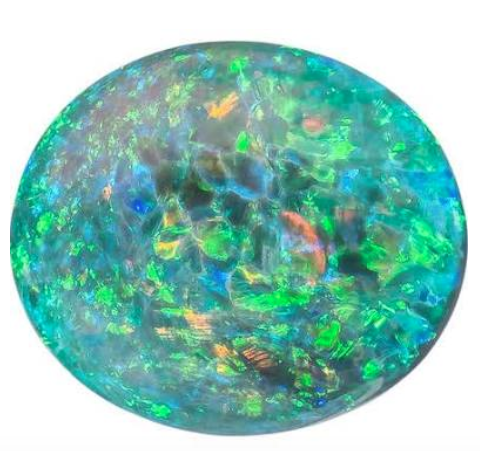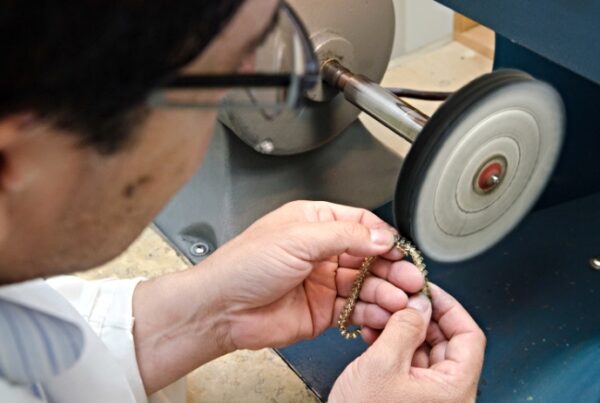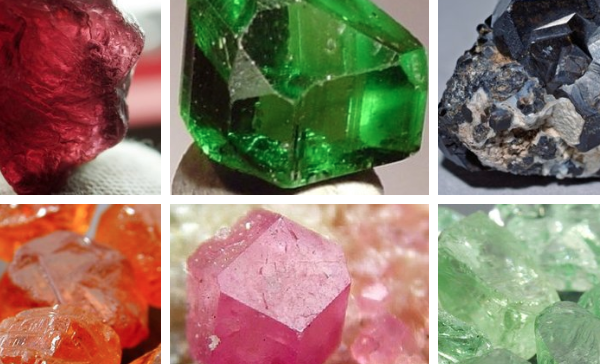Opal formation
The kaleidoscopic opal has held the fascination of people from around the world. During the rainy seasons in places such the Australian out-back, showers drenched the parched ground after the dry seasons. The rain water soaked deep into ancient underground rock, carrying dissolved silica (a compound of silicon and oxygen.) During the dry seasons, most of the water evaporated and left deposits of silica in the cracks and between the layers of underground sedimentary rock. Those silica deposits formed opal.
Opal Color
Opal is known for its unique display of flashing rainbow colors called play-of-color. Writers have compared opals to volcanoes, galaxies, and fireworks. Admirers gave extraordinary opals poetic names like Pandora, Light of the World, and Empress.
There are two broad classes of opal: precious and common. Precious opal displays play-of-color, common opal does not. Play-of-color occurs in precious opal because it’s made up of sub-microscopic spheres stacked in a grid-like pattern—like layers of Ping-Pong balls in a box. As the light waves travel between the spheres, the waves diffract, or bend. As they bend, they break up into the colors of the rainbow, called spectral colors. Play-of-color is the result.
Although experts divide gem opals into many different categories, five of the main types are:
- White or light opal: Translucent to semi-translucent, with play-of-color against a white or light gray background color, called body color.
- Black opal: Translucent to opaque, with play-of-color against a black or other dark background.
- Fire opal: Transparent to translucent, with brown, yellow, orange, or red body color. This material—which often doesn’t show play-of-color—is also known as “Mexican opal.”
- Boulder opal: Translucent to opaque, with play-of-color against a light to dark background. Fragments of the surrounding rock, called matrix, become part of the finished gem.
- Crystal or water opal: Transparent to semitransparent, with a clear background. This type shows exceptional play-of-color.
Opal Hardness and toughness
Opal hardness is variable depending on its exact composition and formation conditions, and ranges from 5 to 6.5 on the Mohs scale. Its toughness is very poor to fair, making opal a gem that is suitable for jewelry but requires extra care to avoid scratching or breakage. Opal is most often mounted in settings where it is surrounded by precious metals for protection.
Treatments
Opals are often treated by impregnation with oil, wax, or plastic, and by surface modifications called sugar treatment and smoke treatments.
Care of Opal
The only safe way to clean opal is with warm, soapy water. Some believe that soaking opal in water helps to keep it from drying out While there is no evidence that this helps, it will not hurt the gem. The heat from direct light, sudden temperature changes, or high heat can cause fracture lines called “crazing.”
Opal Folklore
Because opal has the colors of other gems, the Romans thought it was the most precious and powerful of all. The Bedouins believed that opals contained lightning and fell from the sky during thunderstorms. When Australia’s mines began to produce opals commercially in the 1890s, it quickly became the world’s primary source for this October birthstone.
In 75 AD, the Roman scholar Pliny observed, “Some opali carry such a play within them that they equal the deepest and richest colors of painters.” He marveled that this gem encompassed the red of ruby, the green of emerald, the yellow of topaz, the blue of sapphire, and the purple of amethyst.
Many cultures have credited opal with supernatural origins and powers. Arabic legends say it falls from the heavens in flashes of lightning. The ancient Greeks believed opals gave their owners the gift of prophecy and guarded them from disease. Europeans have long considered the gem a symbol of hope, purity, and truth.
Opal is considered an October birthstone. Some people think it’s unlucky for anyone born in another month to wear an opal. But that particular superstition came from the idea expressed in a novel written in the 1800s (Anne of Geierstein by Sir Walter Scott), In actuality, throughout its history, opal has been regarded a lucky and magical gem because its fiery brilliance shows all colors.
Visit Our Store
The unique opal, although requiring somewhat delicate care, is a beautiful addition to any jewelry wardrobe. Please visit Turley Jewelers in Pinecrest Village, Miami, Florida. We will show you opals whose fiery color will delight and amaze you.

